14 Nights / 15 Days
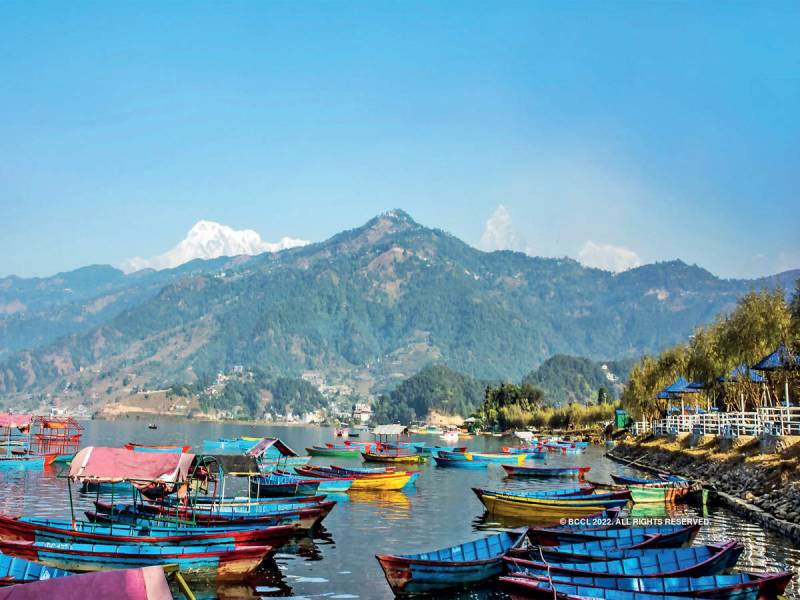
Nepal can be aptly termed the land of the mountains and mystic, is a country where world’s highest elevation is located, where the messenger of peace Buddha was born. If you are seeking to experience exotic culture, unique tradition, awe inspiring architecture, mesmerizing mountains and exciting wilderness look no further pack your bags and head to Nepal.
Upon your arrival in Kathmandu at Tribhuvan International Airport, complete your custom formalities claim your luggage and head towards the arrival gate where you will be greeted by a representative from Arihant Holidays.com.
You will be transferred to Hotel Shanker or similar standard hotel. Tonight you can enjoy a warm dinner at a traditional Nepalese Restaurant featuring Nepalese cultural program.
Today be ready for heritage galore. You will have plenty to see of the Newari arts and culture. Sightseeing for the day includes both heritage and pilgrimage spots all of which are counted in UNESCO world heritage sites.
Kathmandu (Hanuman Dhoka) Durbar Square is a public square containing ancient palaces, temples, statues and streets. There is an ancient wooden pavilion Kasthmandap made by wood gathered from a divine tree, Kalpa Vriksha, build centuries ago. It is this pavilion from which the city got its name Kathmandu. Taleju temple is the oldest and the tallest building in the area, door of which is opened only once in a year during the festival of Dashain. The buildings in the durbar square are important link to the history of Nepal. Hanuman Dhoka is the name given after idol of Hindu monkey god Hanuman which is placed near the entrance of the ancient palace. At Kathmandu you will get to marvel the traditional art and crafts of the Newars, in the form of intricate wood work, sculptors and architecture.
Swaymbhunath is a popular ancient Buddhist pilgrimage site, also known as the Monkey temple. Its structure is a white dome with a gold conical shape on top, which is painted with the watchful eyes of Buddha. A mythological story about origin of Swayambhu states that a lotus that radiated dazzling light sprung at the very spot where the dome is today. The lotus is said to have been planted by Buddha. After climbing 365 stairs that lead to the temple you can explore many legends and mythological stories about its existence. Pashupatinath Temple is the popular pilgrimage site of the Hindus. The main temple is that of Lord Shiva. Though the temple is barred to non-Hindus a good view of the famous pagoda style structure of the temple complex, courtyard and other shrines can be viewed from the opposite bank of the Bagmati River. Shiva’s manifestation as Pashupati lord of animal, is considered one of the holiest sites of the Hindus and is a must visit once in a lifetime to gain salvation. You can also see the Hindus cremation site Aryaghat at the bank of Bagmati River.
Bouddhanath is the largest and the most important holy place for the Buddhists. It is also famous for its power to fulfill wishes and blessings. The base of the stupa is a square shaped terraced plinth representing joy, love, compassion and calmness. The white dome shaped structure on top is painted with yellow to represent lotus. Above which a square tower representing fire is painted with eyes of Buddha. On top of it is the gold conical shaped structure representing air followed by an umbrella on topmost part symbolizing space.
After you get back to your hotel, you can go for a stroll in Thamel and enjoy a relaxing dinner. Overnight at Hotel
Today you will visit Bhaktapur, literally meaning “city of devotees”, was one of the three ancient kingdoms in Kathmandu valley. Bhaktapur is an architectural delight; beautiful stone and wood work are simply fascinating. Bhaktapur has three squares each consisting of palaces and temples that are unique and elaborate than the other.
Nyatapola Temple is one of the tallest temples in Nepal; it is five stories tall pagoda style building. This temple was constructed in 1702 by King Bhupatindra Malla. The temple is dedicated to goddess Siddhi Lakshmi, the entry to the temple is guarded by armed wrestlers, griffon, Lion and goddesses, each one supposedly powerful than the other.
Bhairavnath Temple dedicated to ferocious manifestation of Lord Shiva is also located in the square. The temple is three stories tall and is guarded by brass lions. You may also see wheels stacked on the sides of the temple, they are parts of the chariot used to carry Bhairavnath outside the temple during Bisket Jatra festival.
55 windows palace is the finest example of intricate wood work of the Malla period, ordered to be constructed by the newar King Bhupatindra Malla in the late 17th century. The intricate Golden Gate is the entry to this palace. A part of the palace has been converted into National Art Gallery. Here you can marvel on the beautiful wall paintings that were once in the palaces of Malla kings, intricate paintings that date back to 13th century, frescoes, leaf manuscripts and so forth.
Changu Narayan Temple is located at a hill top approximately 6 kilometers from Bhaktapur. The temple dates back to Lichchavi period (4th to 9th century). The temple is dedicated to Lord Vishnu protector and preserver of all life. The temple is two tiered pagoda style with mythical creatures guarding outside. In the temple premises you will also see one of the oldest inscriptions on a rock dating back to 464 A.D., you will also see beautiful carvings and idols of Lord Bishnu dating back to various periods in time.
When you are in Bhaktapur you should treat your palate with the popular “Juju Dhau” literally meaning King of Curds in newari language. After a short drive from Bhaktapur you will arrive towards Dhulikhel. You will be retiring at Dhulikhel tonight.
Dhulikhel is a beautiful city located approximately around 30 kms from Kathmandu. It falls in an ancient trade route between Tibet and Nepal. It is a beautiful hill station from where you can get magnificent view of the panoramic mountains.
Today you will wake up with the sun to experience the beautiful sunrise from Dhulikhel. After eating breakfast you will head towards Namo Buddha a quaint monastery on top of a hill. Legend has it that the monastery was constructed by a king in memory of his youngest son, who offered his flesh and blood to satiate a starving tigress who had just given birth to three cubs. After his selfless act the son was reborn in a higher realm. Slowly pilgrims started visiting the monastery; they were afraid of wild animals because of which they chanted the words ‘Namo Bhuddhaya’ which means ‘I take refuge in Buddha’ hence, the place came to be known as Namo Buddha.
After exploring the serene environment of Namo Buddha you will head towards Banepa. Banepa is a typical example of a Newari town with many temples and traditional houses. Here you can immerse yourself in the exotic life of the locals as you observe them going around with their business. You can explore temples like Chandeswori and Dhaneswor which have their own myths and folklores.
Panauti is the other Newari town you will visit today it is also one of the oldest towns in Nepal. It is a valley within a valley. Panauti is triangular in shape and lies within the confluence of two rivers. You will have time to briefly explore this town today. After which you head back to your hotel in Dhulikhel.
Today after a scrumptious breakfast you will head towards another pilgrimage site: Palanchowk Bhagwati which is located at Kavrepalanchowk district. The temple contains an intricate 3 feet idol of goddess Bhagwati carved out on black stone.
Legend has it that goddess appeared on the dream of the people and asked to be moved northwards. People carried her in that direction when night fell they decided to rest for a day at the very spot where the temple is today. The next morning when they tried to lift the idol to carry her towards North it was too heavy to be moved. Hence the temple was erected at the very spot.
Pilgrims throng this temple during Dashain festival, animal sacrifice is also offered to the goddess. After observing the rituals and worship at Palanchowk Bhagwati, you will head towards Hattiban. Hattiban literally means Elephant Jungle, although you won’t find any here! It is a beautiful forest mostly visited for the panoramic view of the mountains. If you are interested in rock climbing you can try your hands in it. You can enjoy a good meal at Hattiban resort on the way to Kathmandu you can visit Tashi Gumba a beautiful monastery perched on a nearby hill.
After a day of exploration you will head towards Kathmandu where you will retire for the night.
Rise and shine today you will explore the periphery of Kathmandu valley! We will begin with a drive to Chobhar. According to legends Kathmandu valley was once a lake; it was completely unlivable filled with serpents. Manjushree came to Kathmandu and saw a beautiful lotus blooming in the middle of the lake; he cut open an outlet with his mighty sword and drained out all the water form Kathmandu rendering it habitable. The hills that Manjushree chopped off with his swords are Chobhar hills and there you can also see the gorge from where he drained out all the water of the valley.
Adinath Lokeshwar Temple is located on the bank of Bagmati River near Chobhar; it is dedicated to Rato Machchindranath (rain god). Many visitors offer metal utensils to the deity pinning it up on the walls wishing for a happy conjugal relationship.
After the beautiful hills of Chobhar you will visit Dakshinkali temple which is located only a couple of miles from Chobhar. The idol is unique in a sense it resembles a skeleton garlanded with skulls. Devotees sacrifice roosters and goats to appease the goddess to fulfill their wish.
Folklore has it that goddess Dakshinkali appeared in the dreams of King Pratap Malla asking him to construct a temple on her behalf as she had no physical manifestation. Legend has it that an extremely radiating stone was found on top of a hill from which the statue of goddess Dakhsinkali was carved out. Dakshinkali temple was established at the base of the same hill in Pharping by the king; the remains of the stone came to be known as Dakshinkali’s mother. Historians speculate that the temple was perhaps established between 1641–1673 AD.
On the way back you will visit Newari town of Kirtipur here you will observe varying aspect of Newari way of life. Bagh Bhairav temple is the centerpiece of the towns’ attraction.
At Kirtipur you will observe traditional Newari houses getting firsthand experience of Newari way of life; don’t forget to try out a Newari food platter at a local restaurant. The main attraction of Kirtipur is Bagh Bhairav temple, i
Budhanilkantha Temple is located around 10 km near the city center. It is one of the most revered temple of Lord Vishnu in Nepal. It contains a 5 meter long sprawling statue of Lord Vishnu lying on top of Sesh Naag (thousand headed snake god) surrounded by water. There are many myths and folklores related to its existence. One of which is that once a farmer was tilling his land, when his adze hit a spot on the ground blood started oozing out. He started digging further only to find the statue of Lord Bishnu. After which it was established in its current location. After visiting Budhanilakantha, you will retire for the day in your hotel.
Overnight at Hotel
Kirtipur is originally a Newar foundation, and is still orbits around newari culture. The temple of Bagh Bhairav situated at the center of town is the main religious and artistic structure in Kirtipur. Weapons captured from ancient invaders are nailed to the upper windows of this temple. Other many interesting places you should visit at Kirtipur are the Chilimcho Stupa, Uma Maheshwor, and Shri Kirti Vihara.
Chovar gorge is located 9 km south-west of Kathmandu. Chovar gorge is famous as a place through which all the water of the valley drains. At the top of a nearby hill you can see a small temple of Adinath Sampradaya from where you can observe a delightful view of snow-capped mountains.
Budhanilkantha is situated at the base of Shivapuri Hill inside the Kathmandu Valley on the northern side. It is basically famous for Budhanilkantha temple, which is a deity of Lord Vishnu and this deity is believed to be about 1000 years old.
Patan city is known as the city of fine arts. It is around 8 km south of central Kathmandu and is generally known for its rich tradition of arts and handicrafts. The city is filled with wood and stone carvings, metal statues, and architecture, including dozens of Buddhist and Hindu temples and over a thousand monuments. When you are at Patan, there is one more place you wouldn’t want to miss, the Patan Durbar Square. Durbar square is a good example of Newari architectural marvel. The palace has been converted into museum where you can observe intricate art works and artifacts unique to Nepal. The area houses temples and bahals holding religious significance to the followers of both Hinduism and Buddhism.
Bungmati is about 9 km from Kathmandu. It is very famous as a village where there are lots of temples. Rato Machindranath Temple is one temple you would love to visit at Bungmati, which carries a very significant importance in Nepalese culture.
Khokana which signifies the richness of the early Malla era is about 7 km away from Kathmandu. The main attraction at Khokana is the Khokana Museum. Another major attraction there is the temple of Rudrayani. Along with the museum and Rudrayani temple, various ponds at khokana also carry equal religious importance.
The nepali word ‘Manakamana’ means ‘wishes’. Manakamana Temple is the temple of Durga Bhawani (Hindu Goddess) located in Gorkha District. It is 106 km away from Kathmandu. This temple is amongst the most religious site visited by most people. Nepalese people have a very strong belief that a mere visit to this temple will have their entire wish fulfilled.
From 143 km west of Kathmandu lies a beautiful place rich in natural beauty, Bandipur situated in the Tanahun District. It is around 80 km to the east of Pokhara. Bandipur is increasing in popularity in terms of tourism because of its preserved and old time cultural atmosphere.
After we reach Bandipur, you can have a look at the Bandipur village which resembles the lifestyle of typical village people. From therein we drive towards Pokhara which is the second largest city and one of the most popular destinations of Nepal. It is about 200 km west of Kathmandu.
Pokhara is located in the lap of panoramic Annapurna Himal. When you are in Pokhara, Phewa Lake, Radhakrishna Temple (Bindhyabasini), World Peace Pagoda, Davis Falls are some of the places you wouldn’t want to miss out.
If Kathmandu is the cultural hub of Nepal, Pokhara is the center of adventure. Here starts many of Nepal’s most popular trekking and rafting expeditions. The atmosphere on the shore of Phewa Lake is one of liveliness as hipster backpackers crowd the many bars and restaurants. It is a fun place to meet people, relax and shop around. Sarangkot is the nearest mountain by the lakeside of Pokhara. It takes about 1 to 2 hours to walk from Pokhara to the peak. When you are at the peak of Sarangkot, you can have a good view of the surrounding mountains including fish tail and Annapurna. When you take a look from the peak to the lake, the scene is just wonderful.
Lumbini is a Buddhist pilgrimage site in the Rupandehi district of Nepal. Lumbini is a 10 hour drive from Kathmandu. It is basically famous for the number of temples, including Mayadevi Temple. Along with the temples, it is also famous for Puskarini or Holy Pond where the Buddha’s mother took the ritual dip prior to his birth and where he, too, had his first bath. The holy site of Lumbini has ruins of ancient monasteries, eternal peace of flame, a sacred Bodhi tree and the Asokan pillar.
Tansen is a municipality and the administrative center of Palpa District in the “hills” of western Nepal. It is located on the highway between Butwal and Pokhara. Srinagar Danda (hill) which is a nearby hill to Tansen offers a panoramic view of the high Himalayas. From west to east, the Kanjiroba, you can have a wonderful view of Dhaulagiri, Annapurna, Mansiri, Ganesh and Langtang groups. Other nearby attractions include Ranighat, a Rana place next to the Kaligandaki River, and Ridi Bazaar, a major Hindu pilgrimage destination on the auspicious confluence of the Kaligandaki and Ridi Rivers.
A world heritage site, the main attraction of Lumbini is the Lumbini Garden spread over 2.5 sq km. In 1996, excavations apparently discovered a piece of stone that indicates the exact spot of the birth of Buddha. It does not take too long to wander around in here, however it is a great place to be in. You will love the sight of people coming from different corners of the world to pay respect and tribute to Buddha. The garden is very peaceful, very spiritual and uplifting.
Chitwan in literal sense means “heart of the jungle”. Today, Chitwan is considered to be one of the most interesting places to be in Asia. It is truly wildlife adventure of a different kind - jungle safaris on elephant backs or jeeps, canoe rides, bird watching, jungle walks and trek to chepang hills. It is a place very rich in flora and fauna. Nepal's first national park, the Chitwan National Park together with the Parsa Wildlife Reserve supports much wider species diversity. Rare species include Bengal tiger, gharial and the world's second largest population of Asian Rhinoceros, but also leopards, Mugger crocodile, Indian rock python and several species of deer. The protected areas are guarded by a battalion of the Nepal Army and patrolled by anti-poaching units.
The Chitwan National Park is Asia’s best preserved conservation area, where wildlife thrives and their habitats remain intact. Only half-hour flight from Kathmandu, the park lies in the Inner Terai lowlands and consists of Sal forests, tall elephant grasslands, hills, ox-box lakes and flood plains of the Narayani, Rapti and Reu rivers. Enlisted as a UNESCO World Heritage Site (Natural) in 1984, the park spreads over an area of 932 sq. km. Chitwan National Park is one of the most popular tourist destinations in Nepal. There are also several lodges inside the national park that offer you complete accommodation in combination with elephant and jeep safaris, rafting tours and guided jungle walks.
This morning after breakfast you will end your beautiful journey as you take a bus drive from Chitwan to Kathmandu and it will take you around 4 hours to reach the hotel. During the drive to Kathmandu, you will get to observe beautiful green rivers that will help enrich your travel experience.
After you reach Kathmandu and to your hotel safely, you can take some rest and in the evening you can explore Thamel and buy souvenirs to remember your visit to Nepal. Then you will have your special farewell dinner where you can sit together and cherish the moments spent here in Nepal.
After your breakfast, the journey to the land of mountains will end here. You will be dropped at the airport three hours prior to your scheduled flight. Your plane takes off giving you a final glance of the beautiful Himalayas, a memory of which will remain with you forever. You leave with a promise to come back again to Mystical Nepal.
CFI Holidays Pvt. Ltd, licensed by Nepal Tourism Board is subsidiary COMPANIES of Club40International group of Companies. CFI Holidays Pvt Ltd works in a multi dimension- as a travel company catering the services and product to the travel industry of today and Independent Tour operator catering the services to its client from and to the country.rnSince we all are very well informed that the travel industry has witnessed a spectacular growth in the recent years and its demand is ever increasing & inevitable in the fast paced corporate life with less time to spare. For an executive who is always in a hurry –it is time consuming to contact a travel agent, explain their requirements or even visit different agents to compare prices for effective service. The situations are the same for techno savvy youth of today. As its first dimension CFI Holidays Pvt. Ltd serves you with its portal www.club40holidays.com (Travel Tourism Consolidator global network of offices NEPAL/DUBAI/INDIA/INDONESIA/THAILAND worldwide more than 50 Tie-Ups (Partnership) providing the direct access to one of the broadest selections of travel products and services through its web based system throughout Nepal with extensive partnership worldwide. Company which is unique in its method of operation has already set its trademark in the market. Company is unique –because it offers access to the airlines & other service provider through its web based system in which a consumer can choose from many options available.On the other hand, as another dimension, Company operates as an independent tour operator in Nepal for its entire clientele to and from the country. CFI Holidays Pvt. Ltd was established in the year 2017 by the very qualified professionals with more than years of experience in the travel & tourism industry. Holding places, peoples and customs through professional guides, modern transportations, quality hotels, sightseeing, and other key vendors.rnLazimpat, panipokari-3, Kathmandu Read More...

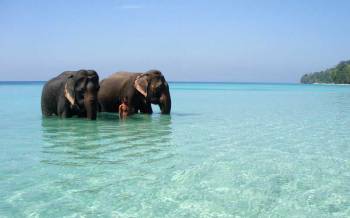 4D/3N
4D/3N
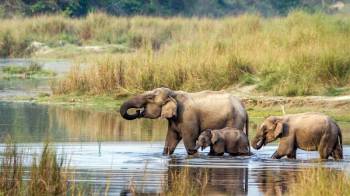 8D/7N
8D/7N
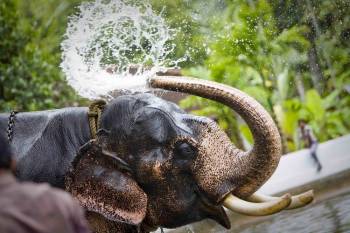 9D/8N
9D/8N
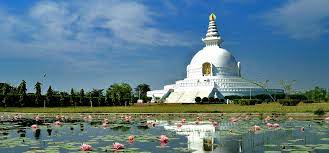 6D/5N
6D/5N
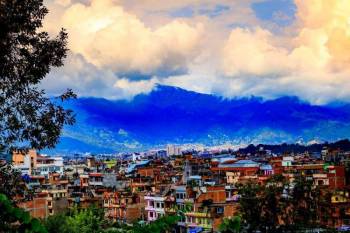 6D/5N
6D/5N
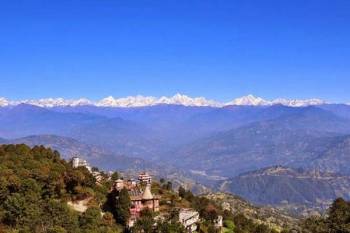 6D/5N
6D/5N
 6D/5N
6D/5N
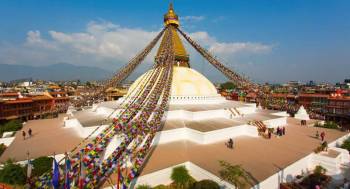 4D/3N
4D/3N
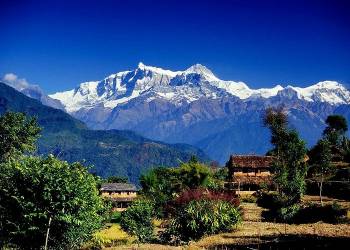 5D/4N
5D/4N
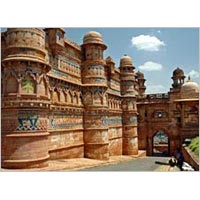 15D/14N
15D/14N
New Delhi - Agra - Gwalior - Bhopal - Indore - Mumbai - Tikamgarh - Chhatarpur - Au..
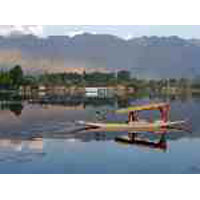 15D/14N
15D/14N
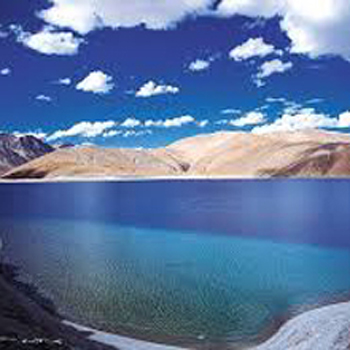 15D/14N
15D/14N
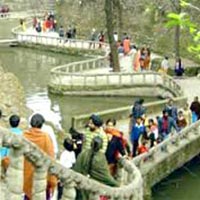 15D/14N
15D/14N
Chandigarh - Shimla - Manali - Dalhousie - Amritsar - Dharamshala
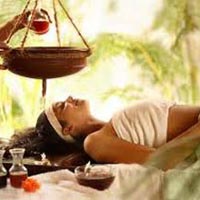 15D/14N
15D/14N
New Delhi - Haridwar - Rishikesh - Shivpuri - Agra - Jaipur
 15D/14N
15D/14N
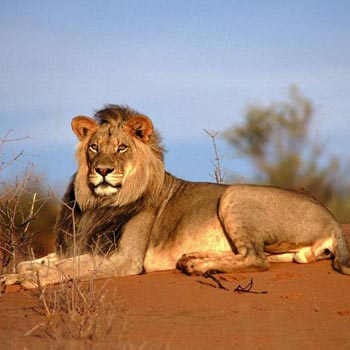 15D/14N
15D/14N
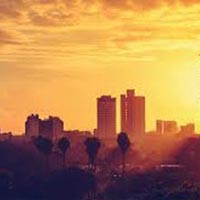 15D/14N
15D/14N
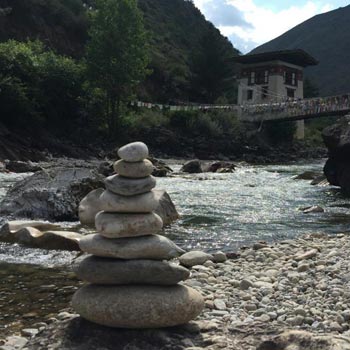 15D/14N
15D/14N
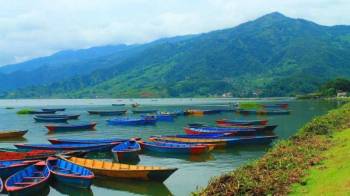 12D/11N
12D/11N
11 Nights - 12 Days Nepal Tour From Gora..
Prayagraj - Gorakhpur - Varanasi - Ayodhya - Kathmandu - Pokhara - Chitwan - janakpur
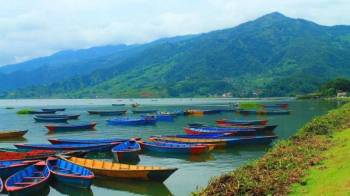 12D/11N
12D/11N
11 Nights - 12 Days Nepal Tour From Gora..
Prayagraj - Gorakhpur - Varanasi - Ayodhya - Kathmandu - Pokhara - Chitwan - janakpur
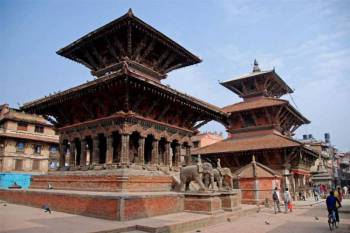 12D/11N
12D/11N
11 Nights - 12 Days Nepal Tour Package - 2
Prayagraj - Gorakhpur - Varanasi - Ayodhya - Kathmandu - Pokhara - Chitwan - janakpur
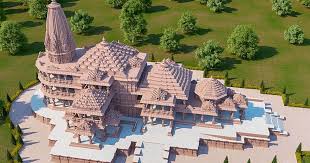 12D/11N
12D/11N
Prayagraj - Varanasi - Bodhgaya - Ayodhya - Pokhara - Chitwan - Parsa
 8D/7N
8D/7N
8D Kathmandu - Chitwan - Pokhara - Lumbi..
Kathmandu - Pokhara - Lumbini - Chitwan - janakpur
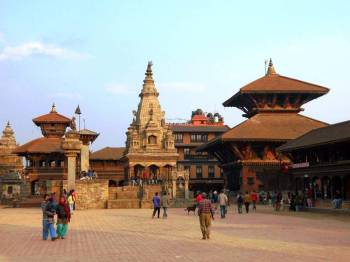 3D/2N
3D/2N
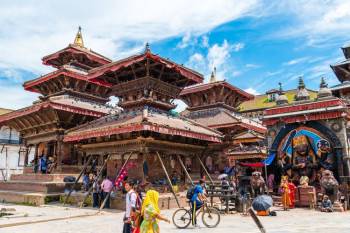 6D/5N
6D/5N
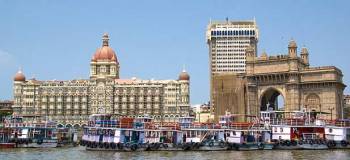 18D/17N
18D/17N
Best of North & West India with Nepal Tour
Mumbai - Kathmandu - New Delhi - Jaipur - Fatehpur Sikri - Agra - Jhansi - Varanasi..